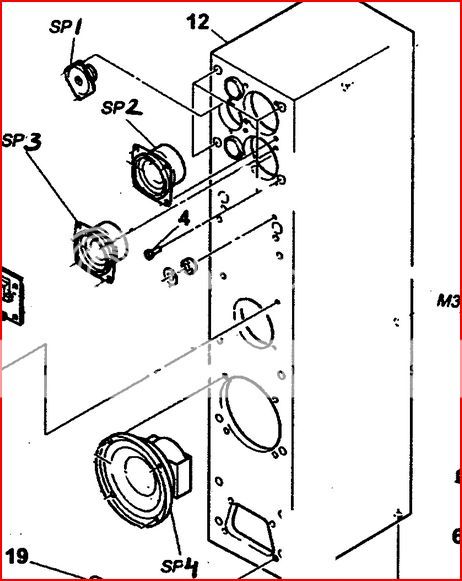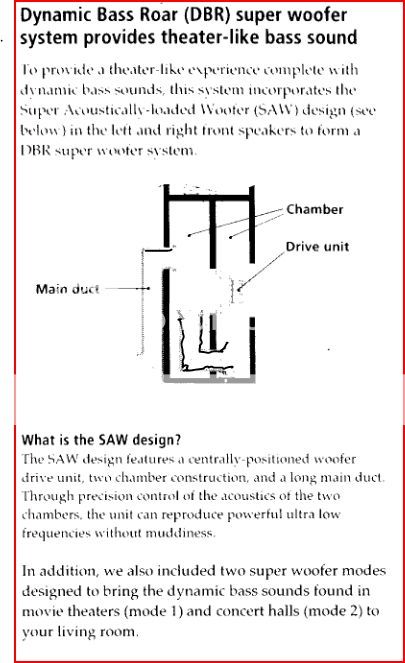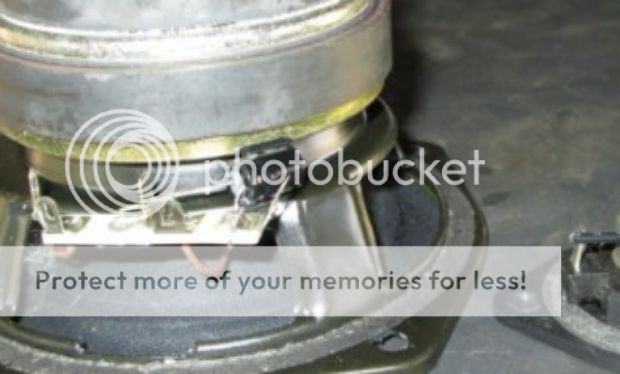So I had found this sony sa-va system in a dumpster and used it in my garage for years. It bumps very dynamically, it has a great sound.
I live out on a large property and have a hoop house art room and noticed the system filled many acres around me with sound.
This year I started draging it around with me to music festivals in my kids wagon till the wee hours of the morning on a Harbor freight 175 inverter and a jumper battery or car battery.
i tripped across the instructables party bike designs and began thinking.
so I want to gut the electrical and t amp it and run it on sla batts.
I'm beginning this thread not at home so Ill have to post the actual pics of certain things when I get home.

2 towers
It has a 6.5 inch sub that is chambered to give it some dynamic throw to it
there's a 6in for the surround that Ive never heard
and a 5.5 with a tweeter up on top
all have very chunky double magnets on them
the above pic isn't quite my exact setup but gives an idea

Ive taken the electronics out and it looks like it is digitally amped but there are so many wires coming off the transformer I'd rather upgrade to t-ams and crossovers of my own.
I would appreciate suggestions on how to power all 6 drivers properly.well 8, but the tweeters are crossed at the parent speaker though
each is an 8ohm driver
the system is rated at 85 watts according to the back plate
I cant find any ratings on the speakers on line though
I live out on a large property and have a hoop house art room and noticed the system filled many acres around me with sound.
This year I started draging it around with me to music festivals in my kids wagon till the wee hours of the morning on a Harbor freight 175 inverter and a jumper battery or car battery.
i tripped across the instructables party bike designs and began thinking.
so I want to gut the electrical and t amp it and run it on sla batts.
I'm beginning this thread not at home so Ill have to post the actual pics of certain things when I get home.

2 towers
It has a 6.5 inch sub that is chambered to give it some dynamic throw to it
there's a 6in for the surround that Ive never heard
and a 5.5 with a tweeter up on top
all have very chunky double magnets on them
the above pic isn't quite my exact setup but gives an idea

Ive taken the electronics out and it looks like it is digitally amped but there are so many wires coming off the transformer I'd rather upgrade to t-ams and crossovers of my own.
I would appreciate suggestions on how to power all 6 drivers properly.well 8, but the tweeters are crossed at the parent speaker though
each is an 8ohm driver
the system is rated at 85 watts according to the back plate
I cant find any ratings on the speakers on line though
A car audio active crossover would be helpful. Try pawn shops, and auto wrecking yards that salvage car audio stuff before crushing cars. And car audio dealers; sometimes there's killer deals lurking on their bargain tables, or pulls left over from upgrades.
Alternatively, a multichannel car amp that has built-in crossovers. Preferably a Class D model.
If you can find a schematic for the speaker's electronics, it could be possible to reuse the original crossovers.
Or... just mount a couple of 6.5" or 6x9" car speakers in the sides of a spare picnic cooler or two.
Alternatively, a multichannel car amp that has built-in crossovers. Preferably a Class D model.
If you can find a schematic for the speaker's electronics, it could be possible to reuse the original crossovers.
Or... just mount a couple of 6.5" or 6x9" car speakers in the sides of a spare picnic cooler or two.
The monoXover is an audio crossover for custom speaker builders. It is designed for use in active (powered) speakers. That is, a speaker with a built-in amp and crossover. The monoXover is a pre-amp crossover - it sits before the amp. This means it can be small and low cost, and it allows a higher overall power efficiency in the system. Sold fully assembled as shown.
Learn more about the monoXover and how to use it for building a high-efficiency powered speaker at our Instructables page.
Learn more about the monoXover and how to use it for building a high-efficiency powered speaker at our Instructables page.
An externally hosted image should be here but it was not working when we last tested it.
An externally hosted image should be here but it was not working when we last tested it.
An externally hosted image should be here but it was not working when we last tested it.
An externally hosted image should be here but it was not working when we last tested it.
An externally hosted image should be here but it was not working when we last tested it.
An externally hosted image should be here but it was not working when we last tested it.
An externally hosted image should be here but it was not working when we last tested it.
An externally hosted image should be here but it was not working when we last tested it.
Features- 2-way crossover (it can be used with any speaker that has a woofer and a tweeter)
- 2000 hz, 2nd-order crossover good for any speaker.
- Adjustable equalizer for the woofer and tweeter
- Built-in source selector: left or right channel, or both with stereo-to-mono conversion
- Published design you can use and modify as needed
- Includes: fully assembled monoXover board, 4 mounting standoffs.
Passive line-level crossovers haven't been popular, historically. At subwoofer frequencies, (where biamping is more worthwhile than at 2 kHz), the inductor values become unwieldy. Performance is affected by the source and load impedance.
$30 for a pair would be enough to build an active 4th order Linkwitz-Riley crossover on prototype board, if you didn't go overboard on fancy parts. Although you could probably build the passive crossover much cheaper by buying the parts and assembling them on terminal strips, or just solder 'em together and cover with heatshrink.
$30 for a pair would be enough to build an active 4th order Linkwitz-Riley crossover on prototype board, if you didn't go overboard on fancy parts. Although you could probably build the passive crossover much cheaper by buying the parts and assembling them on terminal strips, or just solder 'em together and cover with heatshrink.
Yes, simpler can be better. Use a passive crossover to the tweeters. The impedance of the woofers matters, since T-amps produce the most power with 4 ohm loads, and may overheat or go into protection mode with lower impedances. If the woofers aree 4 or 6 ohms, one woofer per amp channel is advisable. If 8 ohms, then using a pair in parallel is OK. If the impedance isn't marked on the woofers, an ohmmeter will give an idea: 3 ohms probably means a 4 ohm woofer, 6 ohms suggests an 8 ohm woofer.
this is my first audio project
fueled by this system, because i was really interested in finding out why it had such good low bass
from the little speaker I found.
(im very dumbed down by the car audio industry apparently)
The neighbor came over today to see my system because he can hear the bass over on his property. Hes pretty amazed by what it is, specially since its stripped of its facing
(I live out on 40 acres in the hills)
Im excited to get an amp(s) on it and see what it can really do
fueled by this system, because i was really interested in finding out why it had such good low bass
from the little speaker I found.
(im very dumbed down by the car audio industry apparently)
The neighbor came over today to see my system because he can hear the bass over on his property. Hes pretty amazed by what it is, specially since its stripped of its facing
(I live out on 40 acres in the hills)
Im excited to get an amp(s) on it and see what it can really do
simpler is better
but this is nothing but powering an existing system
its really all just for big fun and not serious audio sound stuff
its already got an interesting sound that doesnt get boring to listen to
Im excited to hear how a different amp makes it sound
because ultimately, if this experiment isnt better than current
im still happy with the hours i get from a car battery and inverter
and ill divert the parts to another idea
but this is nothing but powering an existing system
its really all just for big fun and not serious audio sound stuff
its already got an interesting sound that doesnt get boring to listen to
Im excited to hear how a different amp makes it sound
because ultimately, if this experiment isnt better than current
im still happy with the hours i get from a car battery and inverter
and ill divert the parts to another idea
- Status
- This old topic is closed. If you want to reopen this topic, contact a moderator using the "Report Post" button.
- Home
- Amplifiers
- Class D
- re-amping an old sony system, first project, suggestions please





